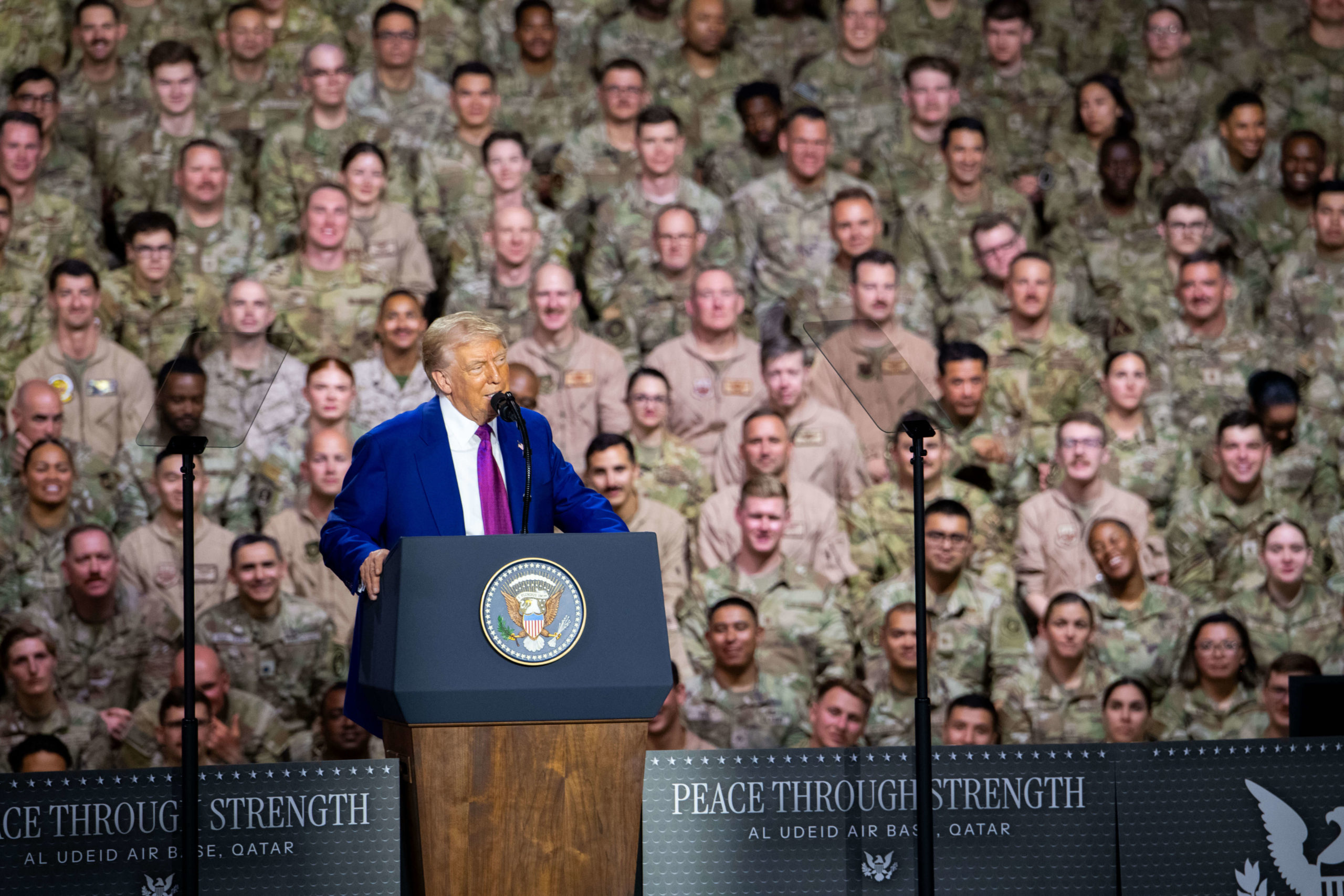President Donald Trump has outlined a dramatic foreign policy shift during his recent address in Saudi Arabia.
The speech signals what appears to be a fundamental realignment of American priorities in the Middle East and potentially reshapes the global balance of power.
A New Vision for the Middle East
Trump’s address presented a markedly different vision for the region than those of previous administrations. “The Middle East should be known for commerce, not chaos. It should be known for technology, not terrorism,” Trump declared in one of the speech’s most memorable lines. This statement encapsulates his administration’s approach: emphasizing economic development and self-determination over Western-imposed democratization efforts.
The president positioned Saudi Arabia as the model for this transformation, praising the kingdom’s efforts to diversify beyond oil and develop what he called “a modern empirical Arabian way.”
Rather than prescribing Western solutions, Trump emphasized that each nation should “be proud of their own legacy,” essentially reinstating power within the nation-state framework.
Strategic Realignment: Saudi Arabia as “Number One Ally”
Perhaps most significantly, Trump explicitly designated Saudi Arabia as America’s “number one ally” in the region—a designation that represents a seismic shift from traditional U.S. foreign policy.
This pivot from established Western alliances to prioritizing Middle Eastern partnerships signals what Murielle Delaporte has described as a move “from Reykjavik to Riyadh.”
The address made clear that the Trump administration sees Saudi Arabia as the cornerstone of regional stability.
Trump highlighted the kingdom’s transformation and urged other nations to follow its example, particularly focusing on economic development and technological advancement rather than ideological battles.
The Iranian Question
Trump drew a sharp distinction between what he characterized as the stabilizing influence of Arab states and the destabilizing role of Iran.
While offering what he called “an olive branch” to Tehran, he simultaneously issued a warning that “repercussions will be real” if Iran continues its current policies.
In one particularly revealing moment, Trump observed: “I have never believed in having permanent enemies. I am different than a lot of people think. I don’t like permanent enemies, but sometimes you need enemies to do the job and you have to do it right.”
This statement provides insight into Trump’s transactional approach to international relations.
Syria Policy Reversal
In one of the speech’s most concrete policy announcements, Trump declared he would lift sanctions on Syria—a decision he attributed directly to the influence of Saudi Arabia and Turkey.
In effect, he indicated that due to the role that Saudi Arabia and Turkey have played, they have changed his mind and that removing sanctions would give Syria “the best chance of success moving forward.”
This decision marks a significant departure from long-standing U.S. policy and signals the growing influence of regional powers in American decision-making regarding the Middle East.
Implications for Europe
The speech carries significant implications for Europe’s role in global affairs.
As the U.S. pivots toward Saudi Arabia and other Middle Eastern partners, European nations may need to recalibrate their own relationships with both America and the Middle East.
The president’s emphasis on Turkey’s role in regional negotiations suggests he may be attempting to influence European affairs through this NATO member that straddles Europe and Asia.
With Turkey’s complex relationship with the European Union—recently complicated by a EU report questioning Turkey’s prospects for accession—these developments could further reshape transatlantic relationships.
Counter to Chinese and Russian Influence
Trump’s Middle East strategy appears designed, at least in part, to counter growing Chinese and Russian influence in the region.
By offering an alternative partnership model to Gulf Cooperation Council nations, the administration seeks to prevent these countries from being drawn into what might be described as “a multi-polar authoritarian world” led by Beijing and Moscow.
A “Trump Effect” Beyond the Middle East
The president also highlighted diplomatic achievements beyond the Middle East, noting Secretary of State Marco Rubio’s successful brokering of cease-fire between India and Pakistan that helped de-escalate tensions between the nuclear-armed neighbors.
This claim, if accurate, suggests the administration’s influence extends well beyond the immediate focus of the Saudi speech.
Conclusion: A Strategic Rethink
Trump’s address represents what appears to be a fundamental rethinking of America’s strategic approach to the Middle East and global affairs more broadly.
By emphasizing commerce over conflict, nation-state sovereignty over imposed democratization, and pivoting toward Saudi Arabia as America’s primary regional ally, the president has outlined a vision that breaks significantly with decades of U.S. foreign policy orthodoxy.
Whether this approach will succeed in bringing greater stability to the troubled region remains to be seen.
However, the speech clearly signals that the traditional frameworks for understanding U.S. engagement with the Middle East—and indeed, the broader international order—may require substantial revision.
Featured photo: President Donald J. Trump addresses U.S. forces, coalition partners and Qatari citizens at Al Udeid Air Base, Qatar, May 15, 2025. This marks Trump’s first official visit to the Middle East during his second presidency. (U.S. Air Force photo by Staff Sgt. Sean Moriarty).
See also the following:
Trump Outlines Vision for Middle East in Landmark Saudi Arabia Speech


